contact
SUPPORTING FAMILIES THROUGH CHILDHOOD

SUPPORTING FAMILIES THROUGH CHILDHOOD
How collaborations within the research community are helping achieve answers quicker
WHAT ARE MULTIDISCIPLINARY TEAMS? FINDING PEER SUPPORT ONLINE
Dave Hartley, dad to Evie, explains how his daughter inspired and received support from different communities following her brain tumour diagnosis Page 6
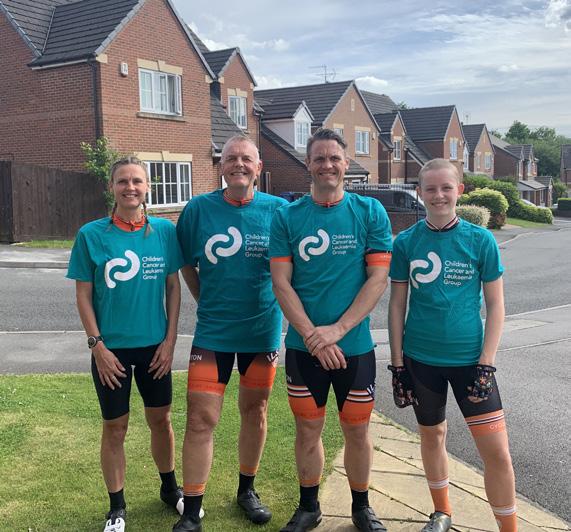

BACK TO BASICS: How communities can support families through childhood cancer
Natalie Kisby, Head of Family Support at Candlelighters, writes on the value of different communities for families affected by childhood cancer Page 8
Members of a choir for children's cancer survivors tell us how the group has empowered, uplifted and inspired them
Page 5
10 Patient story
Ross Long was diagnosed with cancer, aged 16. He describes the support he received from those around him and how he now plans to help other young cancer patients
11 Research nurse Ceri Hogg explains what being a part of CCLG's professional membership means to her
12 Roxanne Lawrance, CEO at Teens Unite Fighting Cancer, tells us how the charity aims to create a community to help patients support each other and rebuild their lives
17 Working together to find pioneering new brain tumour treatments
A research project funded by The Little Princess Trust in partnership with CCLG
04 Medical Adviser
Dr Bob Phillips introduces the theme of ‘Community'
04 News in brief
A round-up of the latest updates in childhood cancer
08 Back to Basics
Natalie Kisby, Head of Family Support at Candlelighters, writes on how different communities can support families through childhood cancer
15 A parent’s view
Claire Farish, whose son Max was diagnosed with cancer in 2021, writes on how finding support from other families helped her family feel less isolated
18 60 seconds with...
Toria Pick, Family Support Worker at PASIC, tells us about her role
19 Ask the Expert
Dr Ren Manias, Contact's new medical adviser, answers your questions on multi-disciplinary teams
05 Members of 'Unity The After Cure Choir' tell us how the group of patients from Leeds Long-Term Follow-up Service empower and uplift each other
06 Dave Hartley's daughter Evie was diagnosed with a brain tumour, aged 12. He tells us about the support the keen cyclist received from her club and the wider cycling community
14 Naomi Shefford-Thomas is CCLG's Information Executive and mum to Phoebe, diagnosed with neuroblastoma in 2016. She tells us how she found invaluable support online from other parents
16 Ellie Wilkinson, CCLG Research Communications Executive, explains how partnerships in childhood cancer are helping to achieve research goals quicker
is a free, quarterly magazine for families of children and young people with cancer.
Contact aims to reduce the sense of isolation many families feel following a diagnosis of childhood cancer.
Children’s Cancer and Leukaemia Group brings together childhood cancer professionals to ensure all children receive the best possible treatment and care. Contact magazine was founded by The Lisa Thaxter Trust and CCLG and first published in 1999.
The contents of Contact are the copyright of the publishers. Articles may be reprinted without charge provided that credit is given to Contact magazine. A copy of any reprinted article should be sent to the editor at the address above. Please let us know your thoughts and feedback about Contact by emailing our Editor at editor@cclg.org.uk
Editorial Board:
Managing Editor – Ashley Ball-Gamble
Editor – Claire Shinfield
Assistant Editor - Sam Chambers
Medical Adviser – Dr Martin English
Medical Adviser – Dr Bob Phillips
Medical Adviser – Dr Ren Manias
Ceri Hogg – Nurse, Cardiff
Mike Francis – Parent and Survivor, York
Katherine Ince – Survivor, London
Dr Vikki Langford - Psychologist, Birmingham
Dr Rebecca Mulholland - Psychologist, Sheffield
Rachael Olley – Parent, CCPA
Gayle Routledge – Parent, Stafford
Samantha Schoolar – Survivor, Coventry
Gill Thaxter – Parent, Coulsdon
Nicky Webb – Nurse, East Midlands
Sally Morrison - Nurse, Leeds
Past issues of Contact: The wide variety of articles published during the year in Contact adds up to a valuable and informative reference archive. If you would like any back issues, please contact the Editor. Details of key articles in previous editions are listed on our website.
www.cclg.org.uk
ChildrensCLG CCLG_UK
Contact Letters, CCLG, Century House, 24 De Montfort Street, Leicester LE1 7GB
Editor: Claire Shinfield editor@cclg.org.uk
facebook.com/ChildrensCLG
twitter.com/CCLG_UK
instagram.com/CCLG_UK
CCLG’s signs and symptoms campaign raises vital awareness during CCAM
“So important to share, thank you ”
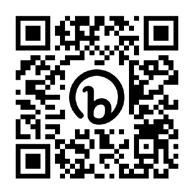

CCLG’s new research blog offers insight into exciting projects
“Really nice to read this research round-up from @CCLG_UK! It explains targeted therapy in a way that is clear and easy to understand.”
Read the post – 'What even is a "targeted therapy" anyway?' – here
"Really nice article from CCLG - starting with a really exciting premise, it highlights some cool science, and then moves on to the charity's own role in supporting it."

Read the post – 'Can we prevent childhood leukaemia?' – here
CCLG's new 'Living beyond cancer' resources help support children's cancer survivors with late effects
"I wish I had this years ago I’m a cancer survivor and had a lot of later health problems due to my treatment. It’s a wonderful thing that things like this are now available "
"Thank you, these fact sheets are really useful. It is especially helpful that you have listed which specific treatments and chemotherapies might cause different long-term effects - we were told at the beginning of treatment what potential late effects there are, but it is so difficult to retain all the information before treatment has even begun."


If you would like to SHARE YOUR STORY in Contact or have an idea for a theme for us to cover, please let us know. Email us at editor@cclg.org.uk
A true community is about feeling connected and responsible for what happens, and bringing comfort and kindness during difficult times.
Friends, neighbours, work colleagues, hospital staff and other families facing the same diagnosis are all types of communities that can give help and support.
Wider medical and scientific communities also exist where professionals work together, both nationally and internationally, to drive positive change for all children with cancer.
Communities are all around us - we just need to reach out and ask for help.
editor@cclg.org.uk Claire
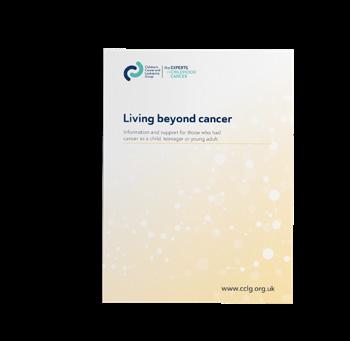

Health information for those who had cancer as a child, teenager or young adult:
learn how your child's diagnosis and treatment may affect their future health understand long-term side effects and how they might affect your child
I think we're all frequently impressed by what can happen when we as people come together, and this issue celebrates the varied communities we find ourselves in. We might live in cities, towns or villages that unite to support one of their own. Or we might belong to a sports club or special interest society, such as those seen in this edition, that provide opportunities, hope and a sense of belonging and identity.
Their positive impact and displays of community might be even more powerful and important to us after the experiences of prolonged isolation through lockdown and intensive cancer therapies, too. I think lockdowns also taught us the power of virtual exchanges and being able to gather in a safe digital space, to talk things through, offload and share advice, is also of great value.
There are other communities in the world of childhood cancer, which you might get a glimpse of from time to time. There are the tight bonds between staff that hold us together through the rocky times, and similarly, the closeness of families, whom, through their shared experiences, can offer support to each other having forged relationships during their children’s treatment.
And then there’s the community that CCLG provides, giving professionals the opportunity to find information, support and new ways of approaching problems, which, in turn, allows us all to build better across the country. It does this through a variety of special interest groups, national advisory panels and conferences and meetings designed to update and educate. There are also charities, like CCLG, which come together - drawing upon each other’s special strengths, skills and resources - to fund only the best and most promising research to have the biggest impact for children with cancer in the future.
What all our groups, gangs and gaggles do varies, but they all work to strengthen and uphold us. We all live our fullest with the support of others and are often empowered by being a part of something. The power of community is strong and can’t be overstated – so don’t be afraid to reach out and embrace it.
The CCLG Tissue Bank for solid tumours and the Leukaemia Cell Bank have merged to form the new VIVO Biobank, a single repository to store all children and young people’s cancer samples. Researchers can request these samples to help understand the cause of cancers, improve diagnosis and improve treatments.
(Source: Cancer Research UK)
To test new leukaemia medicines, researchers across the UK have worked together to create a synthetic bone marrow that can mimic the environment around leukaemia cells.
Leukaemia cells can change their surrounding conditions to help them survive, which can make it difficult to find the right treatment. This project aimed to understand more about leukaemia and its interactions with surrounding bone marrow, to find a new, safer treatment combination for the disease.

(Source: Northumbria University)
Researchers in the USA have discovered a new type of childhood liver cancer. Until recently, there were only two known types of liver cancer, which both have very different treatments and outcomes. However, some tumours have a mix of both types of cancer cells and are known to be a lot more difficult to treat.
The team found that these can be more resistant to chemotherapy and need to be treated with more surgeries like liver transplants.
(Source: Journal of Hepatology)
US researchers have found that an immunotherapy medicine called dinutuximab can help treat children with high-risk neuroblastoma. In their clinical trial, they found that, five years after being treated with the medicine, 61% of children showed no evidence of relapse.
Dinutuximab has already been approved in the UK for use in children since 2018, but researchers are continuing to work on it to understand how to reduce side effects, and how to increase its effectiveness so fewer patients relapse and, crucially, how to tell which patients would benefit from the treatment.
(Source: Journal of Clinical Oncology)
Leanne Connor & Dan Blamires are members of ‘Unity: The After Cure Choir’. They tell us how the choir provides patients from the Leeds long-term follow-up (LTFU) service with a warm and welcoming space to come together, have fun and support each other.
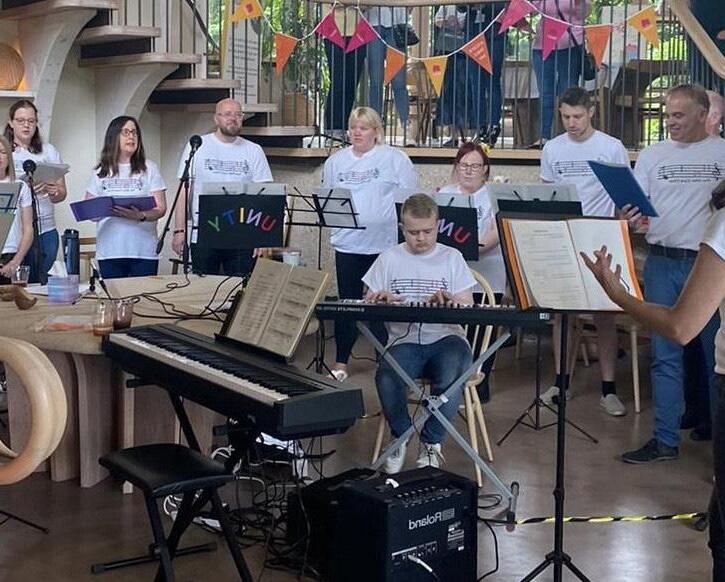
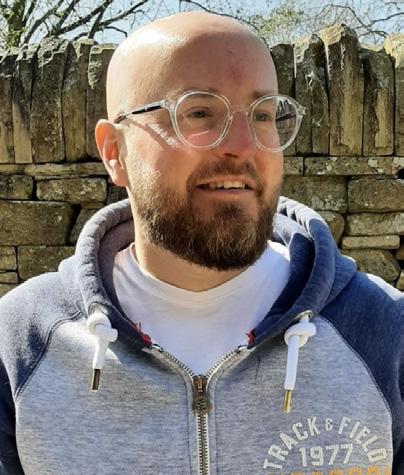
Unity started in 2018, with the idea developed by Dr Michelle Kwok-Williams (LTFU consultant) and Heather Berry (LTFU clinical nurse specialist). The group is made up of patients who attend the Leeds long-term follow-up service, having received treatment for children’s, teenage or young adult cancers and other haematological conditions, as well as their family and friends.
At Unity, we often share the same problems and find that we prop each other up and help each other through some difficult times. Often, it’s just a knowing hug or smile that eases the conundrum of dealing with everyday life as a cancer survivor and strengthens the feeling that we’re not alone.
Everyone looks forward to practice. Singing makes everything seem better and lightens the load. We laugh and sing and just enjoy ourselves. You don't need to be pitch-perfect, it's all about having a good time and leaving your worries at the door. Singing together in a group has helped many of us grow in confidence and even have a go at singing a solo. Everyone is supportive and encourages each other to try new things.
Having started off as four nervous strangers in a room, not really knowing what to expect, we haven’t looked back as we’ve grown in both numbers and confidence. We’ve gone from singing a few songs karaoke-style to possessing a varied repertoire. Our performances have seen us singing at Leeds Minster’s Christmas Carol Concert and our TV debut appearance on BBC Look North. We were even nominated for a Leeds Hospitals ‘Time to Shine’ award, where everyone had a fantastic time at the glamorous ceremony.
Our most recent, and successful, performance saw us hosting a bake-off and concert for our family and friends to help raise money for Maggie’s Yorkshire, which has become our new home to meet and rehearse. We had such a great day for our first performance since COVID and were able to showcase how fabulous the choir has become and wear our new Unity t-shirts, funded by Leeds Hospitals Charity, with pride.
As the group has grown and developed over the years, there’s been lots of friendships made. You could say Unity is like one big family. We’ve
recognised that singing isn’t just what the group is about, and we all look forward to sitting down together and having a chat over a cup of tea or a glass of fizz, too.
Michelle and Heather work very hard behind the scenes to ensure these things run smoothly. They’re always looking for new songs, printing lyrics, securing performance dates and taking care of the logistics.
Unity wouldn’t be here if it wasn’t for their dedication, love and support, and we can’t thank them enough.
"I was diagnosed, aged 13, with acute myeloid leukaemia (AML). I had intensive chemotherapy, total body radiotherapy and a bone marrow transplant. I’ve had to very reluctantly give up my own nursing career because of the long-term side effects of treatment. I felt lost, no role and felt like I’d nothing to talk about but my health worries. Being part of Unity has given me a new purpose and goal in life.”
 Leanne
Leanne
“I was 21 when I was diagnosed with a germinoma brain tumour. My treatment was a five-week course of radiotherapy. It was at one of my clinic appointments that I was asked if I would be interested in joining a choir. It sounded good to me as I'm always up for a new challenge.”
DanDave
Evie was diagnosed with a brain tumour in January 2021. After bravely accepting the news and the journey ahead of her, her thoughts quickly turned to how she could help other children in similar positions through fundraising. She was also extremely determined to continue enjoying her life’s passion of cycling and one of the first and primary questions she asked of the brilliant team at Nottingham’s Queen’s Medical Centre was around whether she could carry on riding her bike! The answer was, thankfully, yes.

Before her diagnosis, cycling helped make lockdown easier for Evie, who spent many hours - and covered over 2,000 miles - on her bike. This deepened her love for the sport, and she was able to stay connected to the region’s cycling community as best as she could through social media and, later, in person, as restrictions lifted. Cycling helped her through the pandemic, and it was destined to become much more important as she faced the even greater challenge of her cancer treatment.
From the first day of her treatment, Evie received an amazing amount of support and encouragement from the senior oncology team, the broader cancer team network, care workers, nurses, friends and family, to keep turning the pedals. In the weeks between high-dose and intensive chemo, Evie

showed resilience to keep pedalling through it and as soon as she was able to get up and around, that typically meant climbing on the static indoor cycle and sometimes out and about on the local trails.
During the middle stages of her treatment, one of the necessary and effective chemotherapy types Evie was receiving had side effects which impacted her ability to walk or grip things with her hands. She found this period extremely difficult to accept and come to terms with, as it had a huge impact on the few ‘normal’ elements of life she’d been firmly holding on to. This is the point where cycling really came into play. With one of many amazing acts of kindness we were blessed with during the most challenging of times, the charity Cyclists Fighting Cancer (CFC) stepped forward with a new bike that was better suited to Evie’s needs. Working around her disability, she was still able to cycle, which had a phenomenally positive impact on both her physical and mental wellbeing.
Evie is an active member of Ilkeston Cycle Club and very well-known across our 500-plus membership and the wider cycling community. She wanted to do something positive that would help other children in her position by raising funds for CCLG, inspired by its work and its vitally important research into childhood
Hartley’s daughter Evie was diagnosed with a brain tumour, aged 12. Here, he tells us how the keen cyclist received support from her club, town and wider cycling communities, and how, in turn, she inspired them to achieve incredible things.
How
cancers, and in particular, brain tumours. Friends and family close to Evie worked with her on a range of different ideas and fundraising events that revolved around cycling. This involved a campaign called ‘How far for Evie’, where cyclists challenged themselves to ride extraordinarily long distances, beat personal lifetime bests and do some generally epic things on two wheels for the cause.
The charity events snowballed and saw an overwhelming response from the wider cycling world and the local community, with a few doors opened and opportunities presenting themselves, too. This included British team INEOS setting up a one-to-one with cycling legend Geraint Thomas. This was amazing for Evie as he’s so successful and one of her heroes, and she got to ask him for lots of tips and explained some of her cycling dreams to him. INEOS also shared information on what we were doing for CCLG, which went out to all its supporters globally. BBC Radio Derby also got involved with interviews and fundraising awards, articles were published in the Cycling Weekly magazines and features were broadcast on the regional TV news programmes, all to promote the cycling charity events further.
Evie’s original aim was to raise £1,000 for CCLG, which would have been an amazing achievement in itself. However, we’ve managed to raise an impressive £60,000 including Gift Aid,
and our aim now is to reach £100,000! The town and cycling communities have been amazing, and I’m proud to be a part of them. Everyone has got behind us and we can’t thank them enough for their support.

She also proudly represented the region at the National School Games in September, racing the track, road and circuits in Loughborough for the East Midlands team.

Evie’s passion for cycling and life in general has inspired the local cycling community and helped build long-lasting relationships, as well as open many doors for her despite the challenges she has faced during her cancer treatment. She has recently passed her British Cycling coaching exams and is actively delivering cycling lessons to kids at the cycling club and passing on her skills, knowledge and enthusiasm for the sport and life in general.
Evie’s focus and determination to keep riding her bike has continued throughout the last 18 months of treatment and as treatment continues still. Her chemotherapy is now less aggressive, and she’s riding more and more, recently winning closed circuit races and finishing third against both girls and boys in a highly competitive race just a few days after treatment.
We now feel extremely blessed and fortunate to be able to plan a little further ahead, with a successful couple of recent MRI scans. Evie aims to meet up with team INEOS at one of the classic cobbled races in Belgium and a stage or two of the Tour De France as it moves through the Alps in 2023. She plans to both spectate and ride along the same roads and courses as the professionals, which will be a great achievement. These plans are keeping Evie highly motivated and in good spirits as her treatment continues.
From the first day of her treatment, Evie received an amazing amount of support and encouragement from the senior oncology team network, care workers, nurses, friends and family to keep turning the pedals.
Natalie Kisby is Head of Family Support at Candlelighters, a regional charity providing emotional, practical and financial support to families of children with cancer in Yorkshire. She discusses the importance and advantages of different communities in supporting families through childhood cancer.

When a child is diagnosed with cancer, everything changes. Things that seemed important before now seem trivial, and any sense of ‘normality’ is lost in an instant. After being thrown into a world of hospital visits, intensive treatment, isolation and stress, it becomes more important than ever to have people around to lean on, who can support you, your child and your family through whatever comes your way. This could be in the weeks
Don’t be afraid to lean on those closest to you for support. They are likely to be there for the important milestones in your life, and a childhood cancer diagnosis is no different. Having the support of those closest to you is crucial when faced with adversity, and they are uniquely placed to provide stability and familiarity when in very unfamiliar territory.
If they are available to offer a listening ear, practical support such as shopping and cooking, or to simply show that your family is in their thoughts, this can go a long way.
following diagnosis, or in the longer term, as you and your family adapt to a ‘new normal’.
Belonging to and having a supportive community around you can be a be source of great help and comfort, both practically and emotionally. But what might the different communities look like? Who is in them and what can they offer?
Treatment for childhood cancer can sometimes mean families need to spend long periods away from home. They may spend an extended amount of time in a new city and can sometimes feel very removed from their local village or town. Returning home can bring a mixture of emotions and leaving the ‘safety’ of the hospital and medical supervision can cause anxiety.
But often, people in the local community, even strangers, want to help. We have seen some brilliant instances of local areas rallying around families to provide practical support - from helping with gardening to household chores - as well as moral support, and even fundraising.
You might not find it easy to accept help from others but saying ‘yes’ can make all the difference in feeling able to cope better with the demands of looking after your child with cancer.
Don’t be afraid to reach out and chat to other parents. We know that families often become friends, bonded by their shared experiences. The experience of childhood cancer is so singular that we cannot underestimate the power of talking to other people who just ‘get it’, without needing an explanation.
On the wards, families can become incredibly close, and many find it very beneficial to keep in touch and support one another through their own individual journeys. There are many charities that help to foster these relationships. For example, at Candlelighters we provide a space for families to meet at our support centre and offer opportunities to get together at groups and events.

School is a big part of any child’s life and crucial to their development. Many patients will miss a significant amount of school due to their treatment and side effects. However, there are things schools can do to help support your child during this time, not only in their learning but to let them know that they are missed and that their friends and teachers are thinking of them.
For example, we know patients are always grateful to receive cards or communications from classmates while in hospital, and teachers can help to ensure that they remain part of the class, despite not being there physically. This can help them to continue to feel connected with their learning, and also helps with the transition when they do return to school.
Talking regularly with your child’s school can be a great help. Try explaining your needs, so they know how to best help you and your child.
Charities are another huge part of the childhood cancer community. Every year, charities like ours help hundreds of local families affected by childhood cancer. They can provide a comprehensive range of services, including talking therapies for all the family – providing a safe space for adults and children to talk through their feelings, worries and anxieties, and giving them the tools to help them cope for the road ahead. We’re part of a broad network of organisations and, using our expertise, we can signpost families to any other support they might need.
Our community project also takes our support out into communities across the region, with a dedicated support worker for each area, helping families to combat the isolation they may feel once they return home from hospital.
Your child’s medical team will know about charities in your area which may be able to help you, while you can find many charities that offer support on the CCLG website at www.cclg.org.uk/useful-links
Ross Long was diagnosed with non-Hodgkin lymphoma in 2013. He tells us about those who supported him and how he plans to write a book to lessen the isolation of other young people diagnosed with cancer.


Being told you have cancer isn’t news you could ever envisage receiving at 16 years old. But four days after my last exam in the summer of 2013, I was told I had abdominal B-cell non-Hodgkin lymphoma. I couldn’t hear the doctors talk about it being aggressive but treatable, but thankfully my parents were listening. All I could think of was how can someone fit and healthy be diagnosed? Like being a teenager wasn’t hard enough!

Before being ill I spent my time doing school work, dashing between sports events and the art department, and seeing friends. I’d built a community of like-minded people around me, then just like that, it was gone. My life became hospital appointments and treatment as I became more and more isolated. It felt like everything around me was imploding and I missed my routine, my friends and, most of all, the person I used to be.
And then I lost my hair.
I already felt like I’d been robbed of my identity, now I looked like the ‘boy with cancer’. I didn’t want to be different, I wanted to fit back into my old life with the people I knew around me. Even when my hair grew back, I still felt different. I went into survival mode and pushed myself to do as much as I could, despite being severely ill.
Before I knew it, I was back with friends and family and felt like more than just a number on my patient's wristband. But getting the all-clear was just the beginning. On paper, I’d been cured, but the invisible psychological imprints remained. I constantly felt like I was dealing with the fears of relapse and the unprocessed trauma and it’s still something I’m battling now.
I couldn’t have done it without them all, which is why I want to give back now I find myself healthy, in remission and nearing 26. I still love sports, but my artistic pursuits have now become a full-time job, as a freelance illustrator. As one with a story to tell, I’ve found myself in the position to write a book, to help other children and young adults struggling with a cancer diagnosis. But, to get this as right as I want it to be, I need some help. I’d be honoured to hear the stories of other children and young adults who have been diagnosed and their experiences with cancer, to ensure this story is told in the best way possible for the cancer community.
If this is something you feel you could help me with, I’d love to hear from you. Please get in touch via my email at rosslong@hotmail.co.uk or for updates on my self-help book, follow my social media channels @rosslong_studio
But despite all the pain, my cancer journey has given me a new appreciation for life, and I continue to find happiness in the smallest of things. This is something I couldn’t have done alone and for this I have to thank every doctor, nurse, social worker, friend and family member that made it more bearable. There’s the team, too, that took me on a sailing trip between my fourth and fifth rounds of chemo with other young cancer patients, where I got to meet and chat with kids like me. It helped me normalise cancer and find another community that understood and showed me the inner strength I possessed.
Ross Long Ross in hospital after having his tumour removed
My CCLG membership initially started with the Children and Young Person Cancer Nurse (CYPCN) working group, where discussions surrounding improving care, innovative practices and nurse education could be had. The group helped me feel included in wider national discussions to improve and develop patient care, something which had massive advantages in terms of professional and personal support.
I now benefit from being a part of three groups that sit within CCLG, including the Children’s Cancer Research Nurse group (CCRNG). Across the UK, there are 21 principal treatment centres (PTCs) and over 70 nurses nationally who hold the title of research nurse and we cover haematology, oncology, teenage and young adult (TYA) cancer and bone marrow transplant (BMT). The group has at least one representative from each PTC and one of the wonderful things about the group is that we all have various levels of research experience and are very supportive of each other.
Historically, this group provides a forum for children’s cancer research nurses to be able to offer peer support and share information and working practices. Some areas only have one research nurse covering the PTC, so this network is vital. We try and meet twice a year, which is currently virtually, but we hope to change this soon.
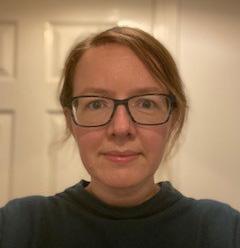
challenges. This means that we can identify and discuss issues around study set-up and provision, to help find resolutions. This is something which would be very difficult if these groups didn’t exist.
CCLG also ensures that members have access to the latest information and resources available and holds various education days and a yearly conference, which is a great way to meet and catch up with colleagues. This always has a varied agenda, including updates on research trials and improvements in patient care, to help equip us as professionals to be able to best support all our patients and families.
Historically, this group provides a forum for children’s cancer research nurses to be able to offer peer support and share information and working practices.
Being a member of CCLG and part of a wider national group has allowed me to link up with professionals from all different disciplines, and as somebody who’s setting up an early phase service, this has been vital.
And, as well as the above, it’s also given me the opportunity to be a part of the Editorial Board for this magazine, which promotes important stories that families will benefit from. This is a great team to be a part of and we all bring something different to our discussions. There’s a lot of hard work that goes on in producing the magazine and to be a small part of this group, and able to make a difference to so many families through it, is amazing.
As clinical trials become more complex and need answers to various questions, the demands on the research nurse’s organisation and coordination of studies also increase. As research nurses, we are often nurse, educator and researcher all rolled into one. Having access to a wide number of groups helps to facilitate all these roles, which is vital for the job and supporting patients with any queries they may have during their clinical trial.
Colleague support is invaluable and being part of a CCLG group means having a helpful and welcoming environment for colleagues to come together nationally, so that assistance and advice can be shared with those who are facing similar
Ceri HoggCeri Hogg is a research clinical nurse specialist, CCLG member and co-chair of the national Children’s Cancer Research Nurses Group (CCRNG). Here, she tells us what being part of CCLG’s professional community means to her and the benefits it brings.
"Being a member of CCLG and part of a wider national group has allowed me to link up with professionals from all different disciplines."
Teens Unite Fighting Cancer supports teenagers and young adults living with cancer and its lasting effects. Roxanne Lawrance, CEO, explains how it aims to create a community so patients can support each other as they begin to rebuild their lives.

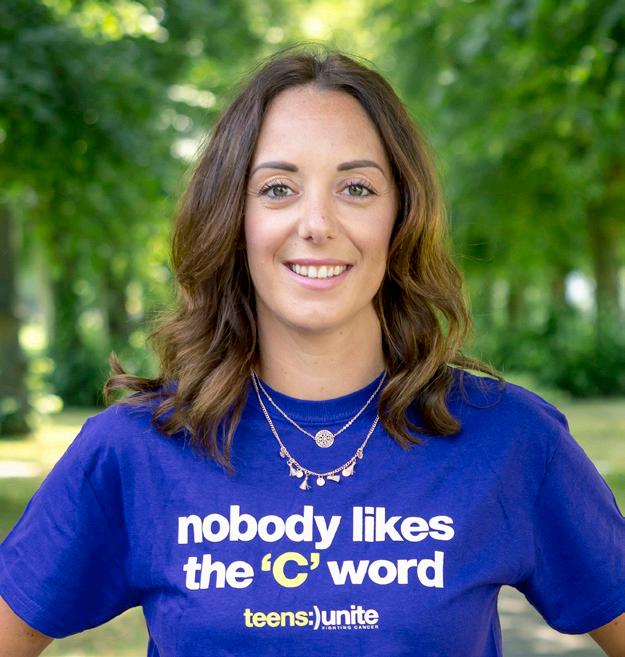

Over the past few years, I believe we’ve all gained a better idea of what ‘community’ means, and the good that can come of it. At a time of anxiety, loneliness and isolation, we were all in it together. We were adapting to a new, unexpected way of living, with all control and decisions taken away from us. The crucial difference between this, and the experience of a young person facing cancer, is that we all felt the same, and were all in the same boat. For young cancer patients, it’s easy to feel like they’re the only one in the world going through what they are.
Following cancer treatment, many young people will experience loneliness, anxiety and depression and some will lose contact with their friends. That’s why at Teens Unite, our focus is to bring young people together, so they’re not alone during the most difficult of times. We’re a community where everyone understands what each other is going through.
Our activities take place both face-to-face and digitally. They’re designed to be fun, enjoyable experiences to look forward to, but it goes much further than that. What the activities provide is the opportunity to find new friendships and confide in each other in a way they might not feel able to with many people. There’s no pressure – they can talk about their cancer if they want to and if they don’t, then that’s fine, too. What’s important is that they feel supported by us and each other, and they have a place they can turn to when they need it.
The effects of cancer are long-lasting, and our support is often needed more after treatment ends. There’s an expectation that life will simply return to ‘normal’, yet this is rarely the case. Life after cancer can change significantly. There’s the missed time from work and education, the coming to terms with physical changes, and the effect cancer can have on emotional wellbeing. The young people we support often feel excluded from the groups they were once in, and now need a new place of belonging.
The activities we organise and our stays away from home help them regain independence, and give them the confidence, reassurance and skills needed to start rebuilding their lives. With the support of the Teens Unite community, they can look forward to taking the next steps. Everyone is at a different stage of their cancer, some may be recently diagnosed, whereas others may be years into remission, or learning to live with incurable cancer, but everyone encourages, supports and inspires each other.
 Activities held at Teens Unite Fighting Cancer
Roxanne Lawrance, CEO of Teens Unite Fighting Cancer
Activities held at Teens Unite Fighting Cancer
Roxanne Lawrance, CEO of Teens Unite Fighting Cancer
In 2015, I was diagnosed with malignant melanoma, which certainly wasn’t part of my plan as a 19-year-old. I was too distracted by school, university applications and my social life that I didn’t pay much attention to the red dot on my thigh, which eventually morphed into an itchy, warttype ‘thingamajig’ that I couldn’t ignore. Fortunately, I took the steps to get it removed.
I knew the official diagnosis wouldn’t be ‘thingamajig’, but I was certain that whatever box it ticked, it wouldn’t be anything sinister and the GP agreed on the grounds that I was ‘too young for cancer’. It was removed at my GP’s surgery, and I thought that was that.
But, three weeks later, I got a call telling me it was melanoma. I knew that was bad, but I didn’t grasp just how bad until I was referred to consultants at St George’s Hospital’s melanoma clinic. My first appointment marked my enrolment into a club that no one wants to be a part of.
I had surgery to determine if my cancer had spread, and I was optimistic that all would be well… but it wasn’t. It had spread to my lymph nodes, and my heart sank at the thought of going back under the knife, but this time for a more invasive operation with a much longer recovery.
It was a painful time, both physically and mentally. I was grieving for the loss of my old self and my attempts to find the support I needed were unsuccessful.
When I found out I was in remission, I was over the moon, but I quickly felt the anti-climax when I returned to school. How could I be sat in class or be out with friends, and act as if all was normal? I felt like Dorothy in the Wizard of Oz, with her whole life turned upside down, swept up and then spat back out into a different world.
Now that my physical health was on the mend, I was desperate to ease the emotional toll. Fortunately, it was at this point that I heard about Teens Unite and was welcomed by a kind voice on the end of the phone. They told me about all the amazing activities I could attend, and the other young people I’d meet. It was what I’d been searching for.
I attended Teens Unite’s Activity Stay - five busy days of activities with others my age, all at different stages of their cancer journeys. None of us wanted to leave, and I couldn’t wait to do more with Teens Unite.
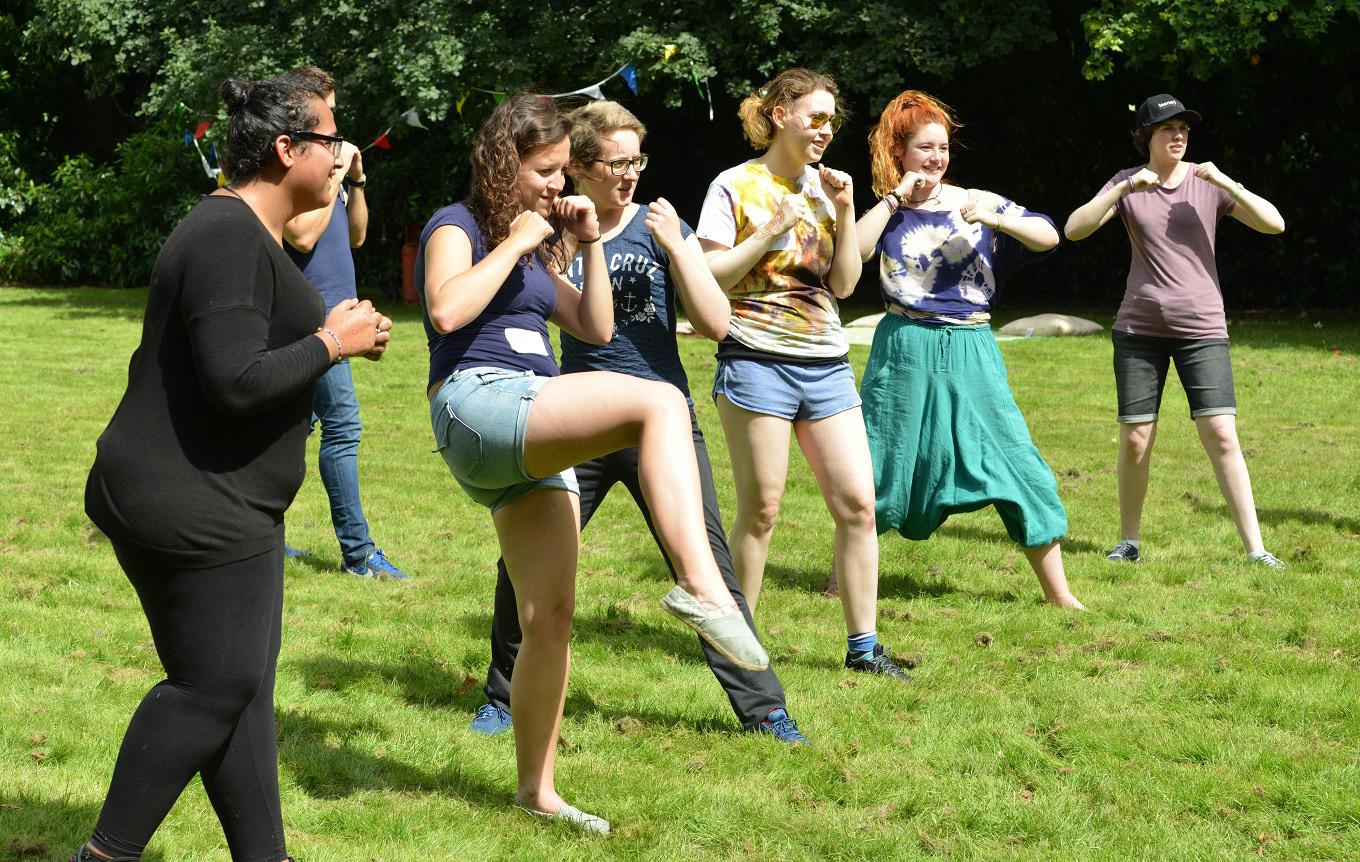

The community I’ve found in Teens Unite has been my silver lining. We have a group chat, filled with birthday messages, words of encouragement when needed, and questions like ‘who’s attending the Teens Unite quiz this week?’ or ‘does anyone know of any good travel insurance providers?’.
We really are like a family and I met one of my best friends through Teens Unite. It’s funny how things turn out, how a community can give you the support and comfort you need, and then give you more than you could ever have hoped for.
Nearly seven years on, I’ve got my degree, have a job I love and any support I need, I get from my ‘cancer chums’. I’ll always spread the word about the good that comes from being with others who get what you’re going through, so that no one feels helpless, lonely, or in need of support that they can’t find elsewhere.
In our darkest hours, having people by our side isn’t just a want, but a need. This community is the light that guides us and, if you find the right one, everything is a little brighter.
Teens Unite’s support is accessible to 13–24-year-olds, no matter how long it’s been since they were diagnosed, and the activities range from:

• Yoga and meditation
• Arts and crafts
• Baking and cookery classes
• Theatre visits
• Stadium tours
• Outdoor activities including archery and rock climbing
• Online gaming and quizzes
• Beauty and skincare sessions
• Career development an life coaching opportunities
For further information and to sign up, visit: www.teensunite.org or email teens@teensunite.org

Everyone is different. Some people wear their heart on their sleeve, others find it very difficult to express how they are feeling. Some people are more private than others. There’s no right or wrong. I can only speak from my own experience.
We were 12 months into my daughter’s treatment by the time I looked online for peer support. Maybe this was because Facebook groups were less common back then, but it was through reading Contact magazine that I became aware of groups of parents and carers who were going through the same experiences, facing the same trauma and challenges, and most likely sat by their child’s hospital bed at that very moment, just like me, and I found that very comforting.
We were just about to embark on a new direction in treatment and I found others who’d had that same treatment. While I realised that every child’s response was different, it was reassuring to speak to others, to prepare for potential side effects and share tips. Finding out about and connecting with parents at a new hospital that we were going to was also very useful. Even now, after treatment, I find peer support important.
Finding support doesn’t just mean sharing your child’s situation. Just ‘being in the room’ with others who you know have been there themselves is reassuring. A safe place to talk about life in hospital, returning to school or work, to ‘scream’ or to share those small triumphs or those huge annoyances that the rest of the world wouldn’t understand, can help you through the day.
There are several groups and forums for parents of children with cancer including CCLG’s own Parents and Carers group, where you’ll not only find
support from your peers, but a space to ask general queries of the experts. Other groups include Young Lives vs Cancer’s parents and carers group, ‘My kid has cancer’, as well as ones relating to your child’s specific type of cancer or treatment. You may also find groups set up for your ward, hospital or region, or charities that you may be aware of or involved with. It’s important to check how a group is run and what the rules are and decide whether that suits you. Rules and moderation are there to both help and protect all members.
Having a child with cancer is very lonely and isolating. Nobody truly understands what you’re going through unless they are going through it, or have been through it too. Speaking to other parents online has helped us to feel less alone, and has often given us hope when times have felt very uncertain.
can be difficult. It’s also important not to replace getting medical advice from your own team by searching for advice online. Always check back with your team, especially if your child’s unwell, as it’s always best to get them checked out.
I’ve made friends and found help and support and been able to provide the same for others in these online spaces. The support from other parents and carers is like no other on this journey. It can feel very isolating and overwhelming at every step and finding people who can identify with you, who just get ‘it’, is invaluable.

Sometimes sensitive and traumatic experiences are shared, and you need to protect yourself. If you are spending more time than usual online and are finding that it’s adding to anxieties, then take a break for a while. Try talking to someone from your child’s team who knows your situation in detail and if you are struggling, see your own doctor.
It's really important to try not to compare your child’s experience and response to others and sometimes this
Phoebe, who was diagnosed with neuroblastoma in 2016. She tells us how invaluable online support from other parents helped her navigate her daughter’s treatment and offers advice to others looking to find the same.
Claire Farish’s son, Max, was 11 years old when diagnosed with cancer in May 2021. She explains how her family initially felt isolated after his diagnosis, but eventually found hope, support and understanding after reaching out.



Max was only a week away from his 12th birthday when he was finally diagnosed with a rare but large metastatic malignant tumour behind his nose. The diagnosis came as a huge shock to us, as any family that ever receives the news that their child has cancer will tell you. Alongside the shock and devastation, however, was an odd sense of relief. We’d known that something wasn’t right, and it had been parental instinct that pushed us to be persistent and tenacious in our
It was a friend of a friend who put me in contact with Rachael at the Childhood Cancer Parents Alliance (CCPA), who called one afternoon and we chatted for ages, which happens a lot when we speak. That conversation was the first time I’d actually spoken to someone who could properly empathise with us, someone who knew exactly how we felt. Talking to someone who has gone through and survived the horror that we were living was comforting. We have an enormous amount of invaluable support from our families and friends that we are so grateful for, but this conversation and the subsequent support was different.
Since that first conversation, we’ve been welcomed wholeheartedly into the CCPA family. The charity’s unique vision is underpinned by the support they provide for the whole family, not just the affected child. Siblings are considered in the same way as their brother or sister and cared for equally. This is so important, given the feelings of trauma, confusion and anxiety, even guilt, they can often go through themselves.
Max’s 10-year-old brother Zak has embraced the opportunities that have been provided through the CCPA. His particular favourite has been online crafting sessions, and he’s looking forward to more face-to-face opportunities in the future. Both of the boys have enjoyed fundraising and volunteering for the charity and have benefited when we’ve received packages or left with armfuls of goodies from the shop.
For me, the sense of community, the belonging and acceptance, has been wonderful. I’ve enjoyed online crafting sessions, journaling courses, quiz nights and been made to feel
incredibly welcome at all of them. Often, we enjoy light-hearted chat and simply compare notes about the usual day-to-day of family life. But there’s an understanding that, if you need advice, to let off steam, to vent or simply to emotionally unload, there’s a group of people who know exactly how you’re feeling, know what to say and have no expectations of you.
Talking to someone who has gone through and survived the horror that we were living was comforting. We have an enormous amount of invaluable support from our families and friends that we are so grateful for, but this conversation and the subsequent support was different.
As a parent of a child with cancer, you’re often told you’re amazing, but there really is no choice, you just have to get on with it. But it’s with the support of charities like the CCPA and the families you meet along the way that help you through and be there for those who are the really amazing ones, our children.











Working in partnership with other charities can help us to achieve results quicker, by funding more, and betterquality, research. That’s why CCLG is working to foster a childhood cancer research community that improves collaboration. Over the last six years, we’ve worked together with six other children’s cancer charities, including The Little Princess Trust and Candlelighters, to fund over £19 million of research projects. We offer other childhood cancer charities our significant research expertise to run and manage collaborative projects, alongside contributing funding for the research. An important part of this work is our expert advisory board, which reviews research applications to ensure that they are top-quality proposals.
Our partnership with CCLG is incredibly important to us. We benefit immensely from the expertise of their advisory groups to review our applications, which ensures we’re funding the best-quality research of the highest priority.

It wouldn’t make sense for The Little Princess Trust to duplicate CCLG’s resources - the partnership allows us to channel more of our funds towards research, rather than into the costs administrating the research process.





Only by working together as a community can we make sure big enough numbers are involved in research and lots of different pieces of the puzzle can be put together to understand the bigger picture and make real improvements, so that ultimately, more children survive cancer and survive it better.
Researchers often share their data and knowledge between different disciplines of cancer research and across international boundaries. Dr Alejandra Bruna's work is an excellent example of how sharing ideas and knowledge across fields can improve research.
Dr Bruna worked in breast cancer research for 12 years but moved into childhood brain cancer research after realising the limitations clinicians and researchers were facing in treating this disease.

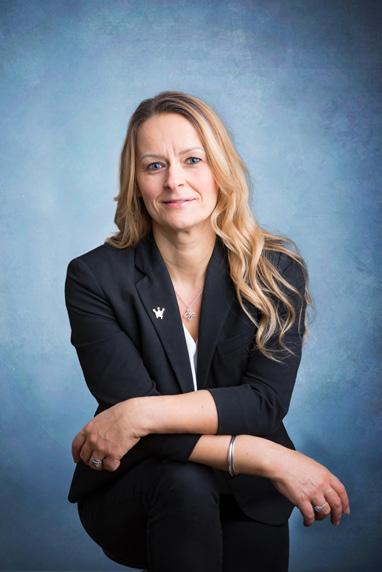

She believes that collaborative working was instrumental to her starting research in a new field, and that her experience has brought new experimental approaches and ways of thinking which complement the amazing work already done. She’s now leading a project, funded by The Little Princess Trust in partnership with CCLG, which is
using genetic analysis to find out how neuroblastoma evolves to pave the way for new treatment strategies and ways to prevent resistance and relapse.


As a part of the international childhood cancer research community, Dr Jonathan Bond is currently working on a project with Tanzanian researchers based at Muhimbili National Hospital. He wants to help address the global challenge of childhood cancer and to close the survival gap between children with leukaemia in different countries. Dr Bond’s project looks at creating cheaper and easier genetic tests so that Tanzanian hospitals have a way to personalise treatments for childhood leukaemia, which would mean every child could have the best treatment for their specific cancer type.
Much of childhood cancer research involves charities, researchers and doctors seeing an area of ‘unmet need’ and working together for the betterment of the childhood cancer community. This free exchange of ideas and information has shaped the current research landscape and shows the importance of fostering a collaborative community.
researchers are linking up to work towards a better futureEllie Wilkinson Wendy Tarplee-Morris, Director of Service and Impact at The Little Princess Trust Emily Wragg Chief Executive at Candlelighters
PROJECT TITLE: Towards a new therapy against childhood brain cancer: How does the Zika virus kill aggressive brain tumour cells?






















LEAD INVESTIGATOR: Dr Rob Ewing
INSTITUTION: UNIVERSITY OF SOUTHAMPTON










AMOUNT AWARDED: Approx £35,000 (funded by The Little Princess Trust in partnership with CCLG)
Proteins in our cells work together to carry out all the functions required for life. My research team at the University of Southampton studies the interactions between proteins in cancer cells, which allows us to understand which proteins drive the formation of cancers and how they contribute to cancer severity.
Several years ago, we were working with Professor Keith Okamoto and his research team in Brazil to understand how stem cells contribute to childhood brain cancer. At the time, there was an epidemic of the Zika virus in Brazil, and Professor Okamoto and his team discovered that brain cancer cells could be infected and rapidly killed by the virus.
This finding was incredibly exciting and got us all thinking about how the Zika virus might be doing this, and whether we could use it to treat childhood brain cancer.
We started by asking two questions:



1. Which genes are affected when the Zika virus infects brain tumour cells?
2. Which of the proteins within brain tumour cells interact with the Zika virus’s proteins?
With the answers to these questions, Professor Okamoto and I aim to work out the precise way in which the virus kills the cancer cells. This will help us







establish whether the Zika virus could be used as a brain cancer therapy. We also hope that understanding more about how the Zika virus attacks brain cancer will highlight cancer cell processes that can be targeted with existing medications.
Working together, the research teams have identified several ways in which the virus manipulates in brain cancer cells and are currently investigating these further.

We found that the response of brain cancer cells is very different from the response of normal brain cells to a Zika virus infection. This is a really important finding, and we are working to explore this difference so that we can make sure any future Zika-based therapy is safe by ensuring it only targets brain cancer cells.
This research is just beginning, and it will take some time for all our work to bear fruit in the clinic. However, we strongly believe that our collaborative work will contribute to a Zika-based therapy progressing into clinical trials within the next three

Our recent work has also highlighted that the Zika virus can infect and kill neuroblastoma cells and having a therapy such as Zika which we could
use against both brain cancer and neuroblastoma would be a real game-changer for treatment of childhood cancer.
Wider research into using viruses to infect and kill cancer cells is happening a lot at the moment, which we hope will help accelerate our own progress on Zika-based therapies. In the wider childhood cancer community, there is a stark contrast between the treatment and survival of children in high-income countries, such as the UK, and low-middle-income countries, such as Brazil. By working closely with the expert Brazilian team on this project, we are helping to bridge this gap and improve treatment of children with cancer in poorer countries.
We are now working to bring our Zika virus research in neuroblastoma up to speed and in-line with our brain tumour research. This will be a focus for us moving forward as we believe that analysing these cancer types alongside each other will yield the best outcome for childhood cancer patients worldwide.

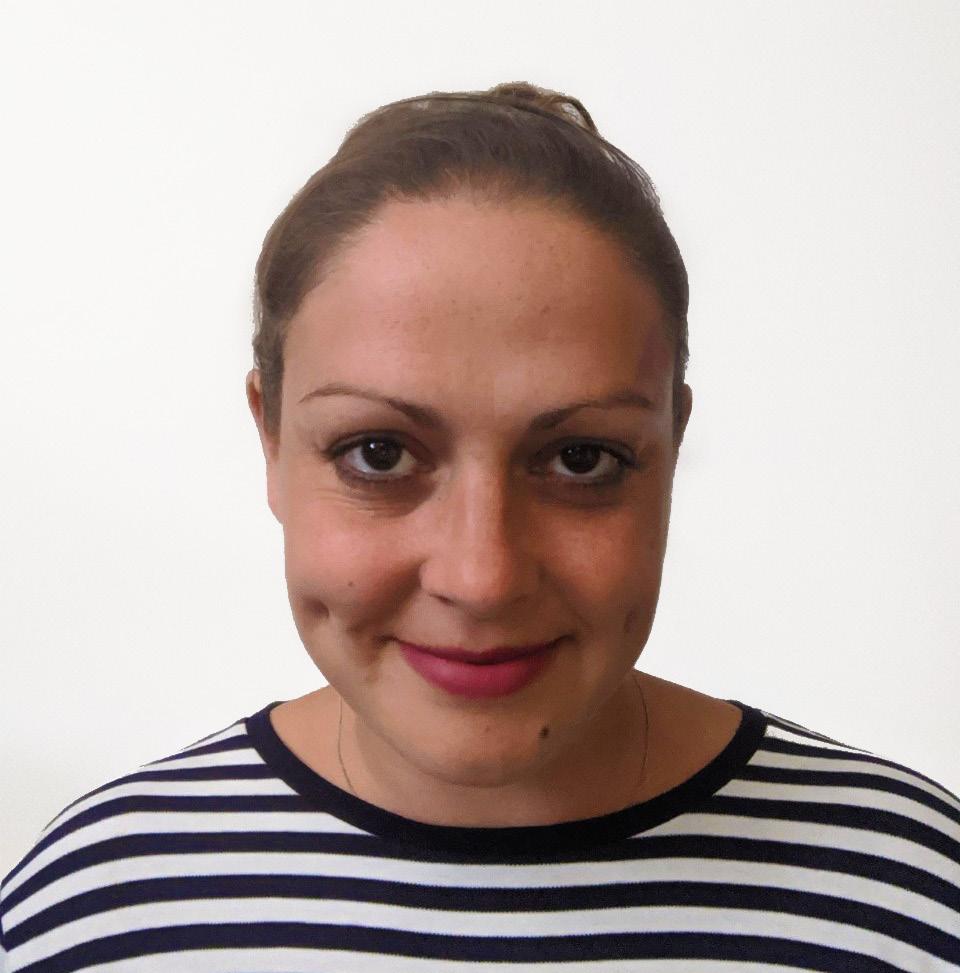
Q: Tell us about your career so far?
A: I’ve always wanted to look after other people. My first job was as a nursery nurse, closely followed by community care, then palliative care at a children’s hospice. Now, I’m a family support worker for an amazing charity called PASIC.
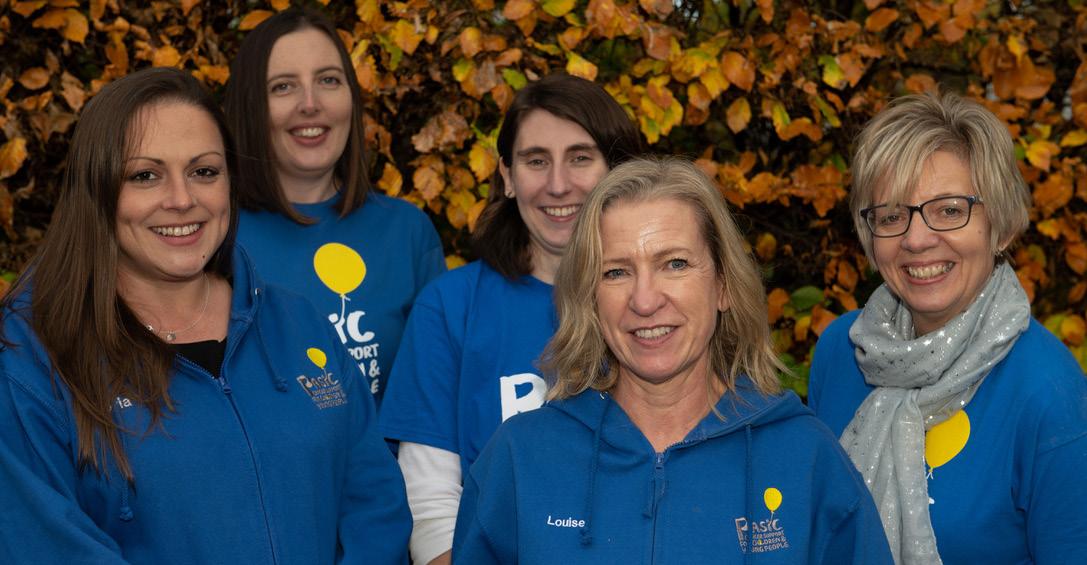
Q: What does your role involve?
A: As a family support worker for the Leicester and Northampton paediatric oncology wards, I currently support 187 families throughout treatment and for three years after treatment ends.
I’m a listening ear (be it face-to-face, over the phone or by text), a hug, a tissue-giver, a tea-maker, a distraction, an advice-giver, a friendly face and a small part of a very big team of incredible people on those wards.
I take gifts to the wards and give grants to help families with things like added travel expenses and bills. We also offer supermarket vouchers to help with the steroid cravings which is an expense that nobody expects and for our teenagers, we offer a little lift by giving them an age-appropriate gift.
We organise days out that allow families to attend without worrying about the cost of tickets and we have huge PASIC parties where everyone can just feel a little more relaxed knowing that everyone attending is going through the same thing. No two days are the same and we’re always adding to the things we can offer families.
Q: What is the proudest moment of your career so far?
A: When Christmas came early one year. ‘Santa’ visited a family at home and with a little PASIC magic and some fantastic donations, the family was supplied with a Christmas tree, decorations and
Christmas dinner with all the trimmings, as well as wrapped presents for all of the family.
Abseiling off an old aqueduct to raise money for PASIC was also memorable. I have a fear of heights, but when my feet finally touched solid ground again, I was very proud of myself.
Q: What does your job mean to you?
A: I get to help people that are having a really tough time. This is something that means an awful lot to me, and I’m bringing my daughter up to understand how important it is to care for others. When you can make someone smile or just lift them a little… that’s when you know you’ve done a good job.
Q: Do you have a message for children, young people and their families affected by cancer?
A: Reach out to the staff and the charities around you… we’re all here to help and make your life a little bit easier. Don’t forget to write things down and ask as many questions as you need to, and remember, it’s okay to need a few minutes away from the ward, too. Go and get that coffee, breathe and do what you need to do to for your own wellbeing.
Q: How can families find out about accessing a family support worker?
A: PASIC works within three treatment centres - Nottingham’s Queen’s Medical Centre, Leicester Royal Infirmary and Northampton General Hospital. If your child is treated at any of these hospitals, we can support you and you can contact us at www.pasic.org.uk.
Outside of these hospitals there are many charities in the UK offering family support, so keep an eye out on your ward and ask for more information. Just remember, wherever you are, we are all here for you.
A multi-disciplinary team (MDT) is a group of professionals with different areas of expertise who work together collaboratively to oversee and deliver the best possible care for every child diagnosed with cancer. The MDT at the principal treatment centre (PTC) is a central part of each child’s care.

An MDT consists of professionals from different specialities with expertise in childhood cancer and many members are national or international experts in their field. A typical MDT consists of paediatric oncologists, haematologists, surgeons, radiologists, pathologists, radiation oncologists, nurses and pharmacists. Sometimes, other specialists are invited to join if their input would be helpful in a particular child’s care.
MDT meetings are conferences at which members of the team come together to review information about each child and make decisions about management at various points of their cancer journey. These meetings take place on a regular basis, usually weekly or fortnightly.
Children are discussed at the point of diagnosis and at specified points along their treatment plan. Reasons for discussion include the assessment of treatment response, end of treatment, progressive or relapsed disease and complications or side effects of treatment. Each patient’s history, scans and pathology are reviewed, and the MDT uses this information to make recommendations about diagnosis, investigations, treatment and other aspects of management.
The discussions are minuted by a coordinator and clear records are kept for future reference. In addition to local MDTs, children can be reviewed at national MDTs to receive specialist input from experts in particular cancers from outside their PTC. These are conducted online so that experts from anywhere in the country can be involved.
Collaborative, multi-disciplinary working is essential to providing a consistent, coordinated and holistic approach to children’s cancer treatment. When specialist teams work together, they can share their
knowledge and skills to make recommendations for the best treatment for an individual child. This offers clear benefits over being managed by one individual.
Research shows that MDTs improve patient outcomes, increase evidence-based decision making and improve education of the professionals within them. The MDT model in specialist centres is one of the main contributing factors to the increased cure rates for children’s cancer since the 1970s. The NHS Cancer Plan mandates MDT working, which is seen as the ‘gold standard’ for children’s cancer care.
Parents aren’t routinely invited to join MDT meetings, but your oncologist or nurse will let you know when your child is being discussed. You can let them know anything you would like to be considered by the MDT, and that will be presented at the meeting and taken into account.
Your child’s oncologist will share the outcome of discussions and recommendations with you once the meeting has taken place. It’s important to remember that any final decisions about treatment or other aspects of your child’s care will be made jointly between you and your consultant, while taking the advice from the MDT into consideration.
Have a question to ask one of our experts?
Please get in touch by emailing info@cclg.org.uk or via DM on our social channels. We may feature your question in a future ‘Ask the Expert’ to help other families and patients who have the same question.
April 2023
London Landmarks Half Marathon

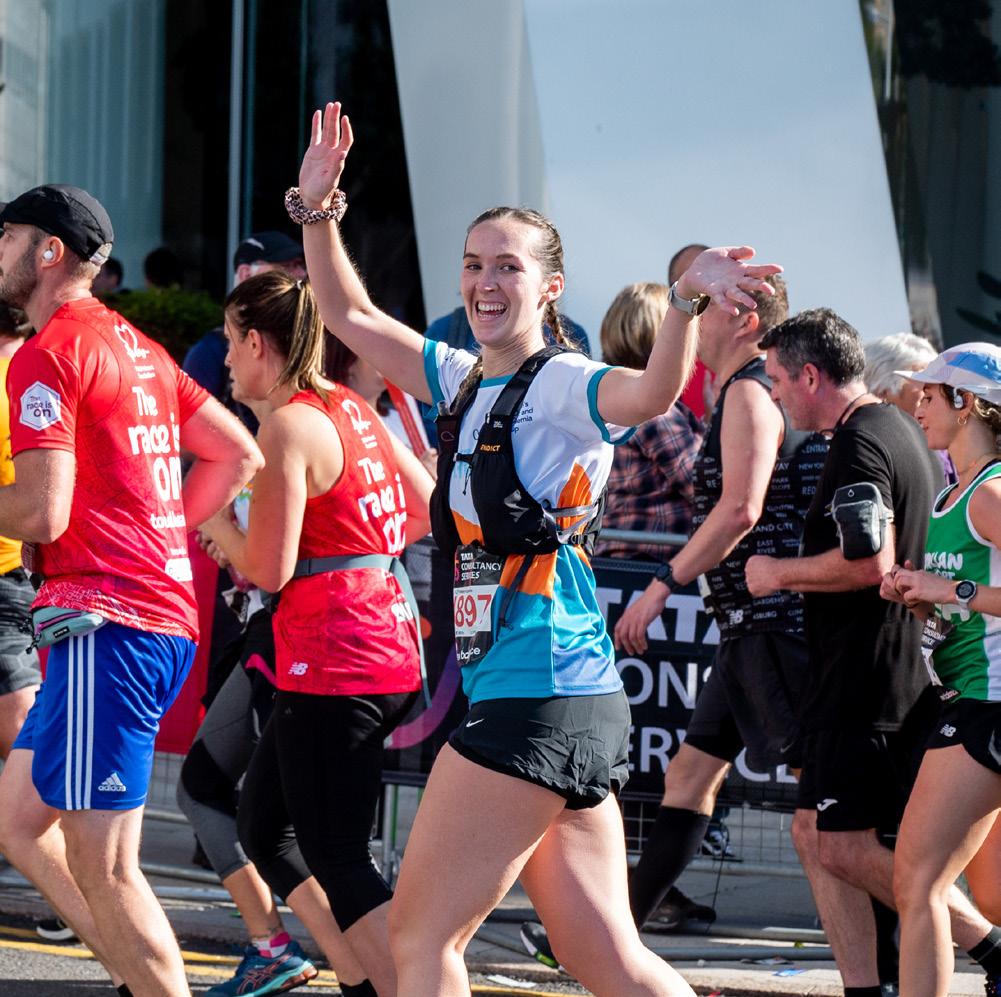
London Marathon
May 2023
Abseil Adventure (London)

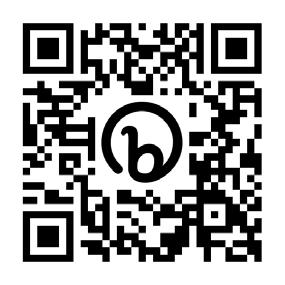
September 2023
SkyDive for a Difference (nationwide)